Unless you’ve been living under a rock for the past year, everyone knows about ChatGPT. AI has been taken off in a huge way for various platforms, including writing, art, video, and audio creation and manipulation. Now you have the possibility to create your own GPT, Generative Pre-trained Transformers. Let’s take a look at what a GPT is, how to build one, and various use cases.
What is a GPT?
Rather than break down what a GPT is for you, we asked ChatGPT for you. Here was its answers:
A GPT, or Generative Pre-trained Transformer, is an advanced type of artificial intelligence model designed for understanding and generating human-like text. It’s part of a broader category of AI known as natural language processing (NLP). Here’s a breakdown of what a GPT is and how it works:
- Generative: It can generate text, meaning it can produce coherent, contextually relevant words and sentences based on input it receives.
- Pre-trained: Before it’s used, a GPT is trained on a vast dataset of text. This training involves learning language patterns, structures, and nuances from a wide variety of sources. The training process doesn’t teach the model specific facts or data but rather how to understand and generate language.
- Transformer: This refers to the specific type of machine learning architecture used by the model. The transformer architecture is particularly effective for tasks involving sequential data, like language. It allows the model to weigh the importance of different words in a sentence and understand how they relate to each other, enabling it to generate more coherent and contextually appropriate responses.
- Applications: GPT models are used in a variety of applications, including chatbots, content creation, language translation, and more. They can assist in writing tasks, answer questions, and even generate creative content like stories or poems.
- Versions: There have been several versions of GPT, with each new version typically being more powerful than the last. These improvements often include a larger training dataset, a more complex model structure, and better fine-tuning techniques, leading to more sophisticated and accurate text generation.
In summary, a GPT is a powerful tool in the field of AI and NLP, capable of understanding and generating human-like text, with a wide range of practical applications.
-ChatGPT
How to Build Your Own GPT
To get started, first you will need to have a paid account ($20 a month) or be part of an enterprise plan. First, we want to open the explore feature.
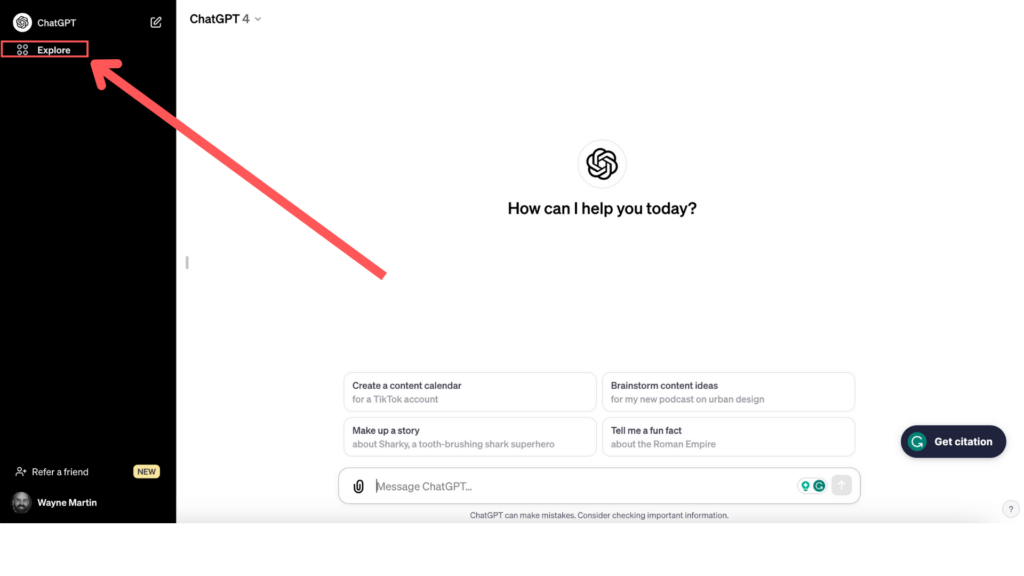
Next, let’s create a new GPT.
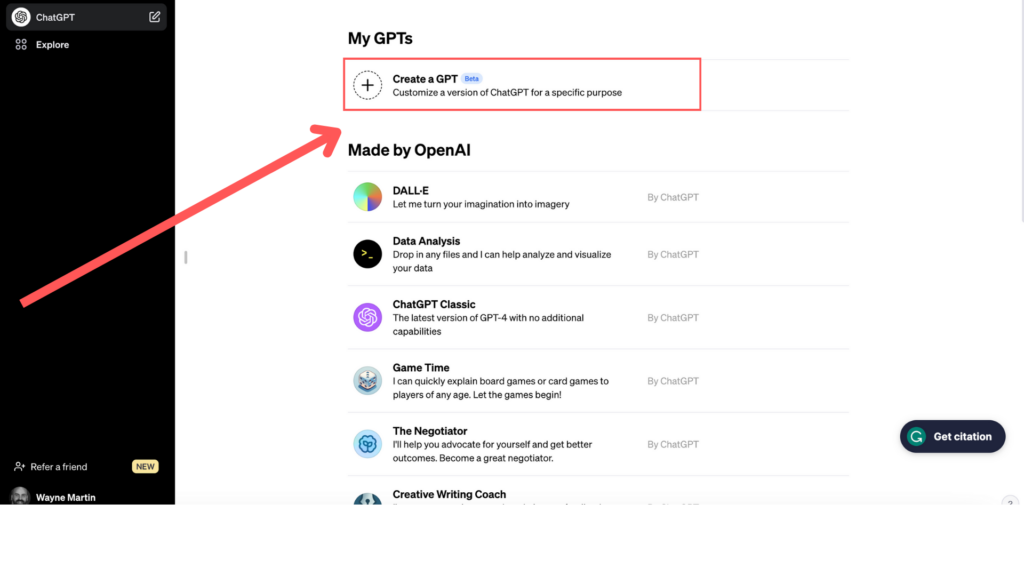
Now for the fun part: deciding what you want your GPT to do. In this example, I want to create an email GPT. Something capable of replying to emails, creating email campaign templates, helping build them in HTML, and utilizing our company branding in the process.
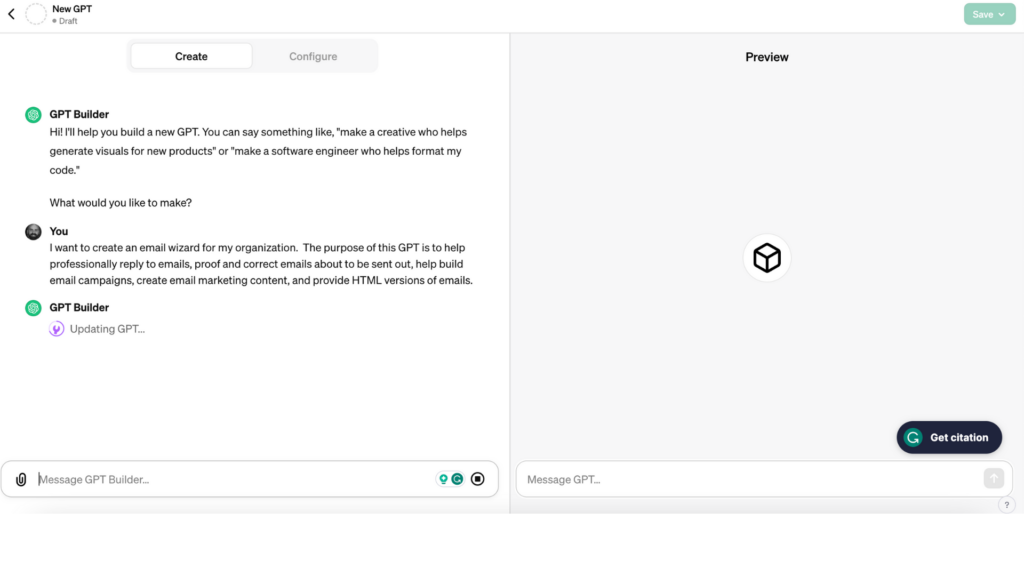
Keep in mind that as you build this, the transitions between each prompt take a little time. After it finishes, it will suggest a name and image for your GPT. As you can see we didn’t care for the first design so we gave it a prompt to make a new one.
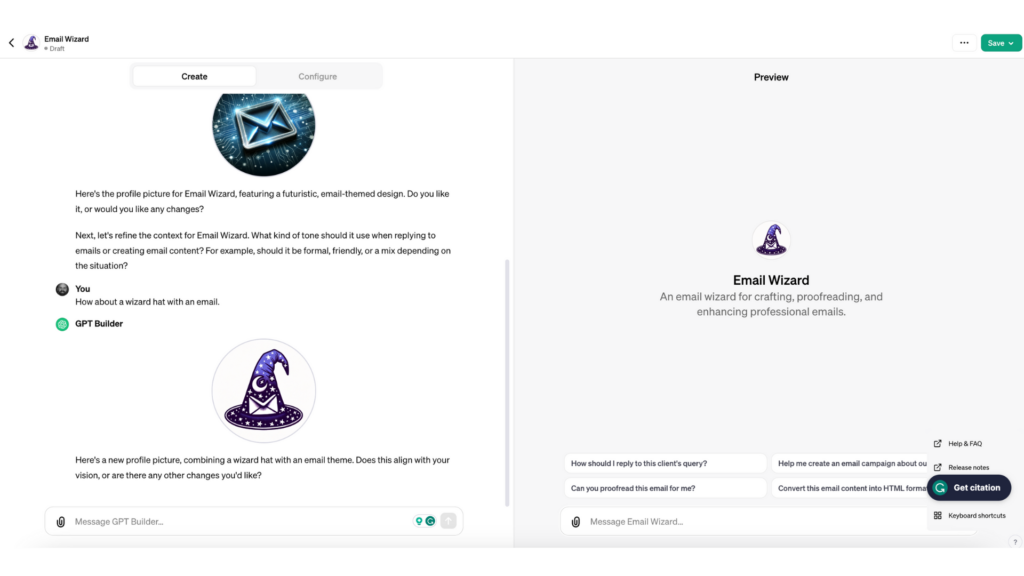
So we are almost done, but one more thing we might want to include in this GPT is forcing our company branding, style, and tone.
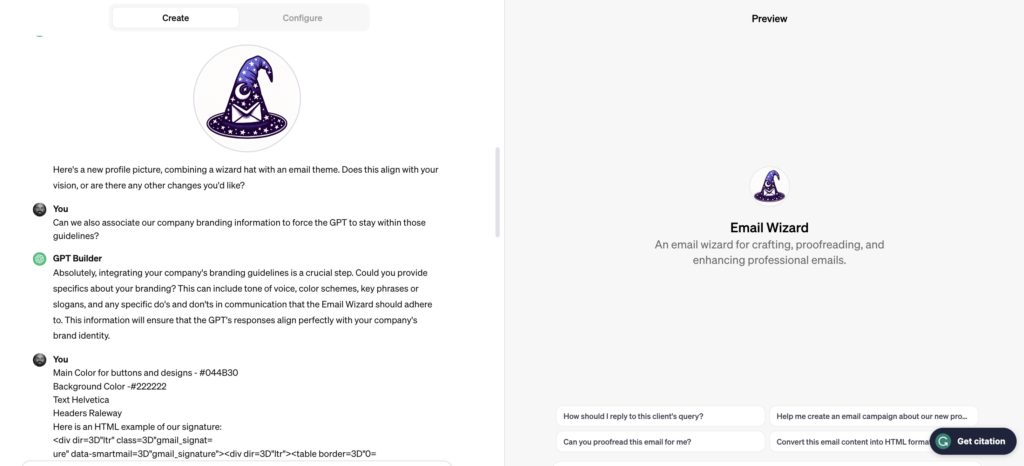
And finally…
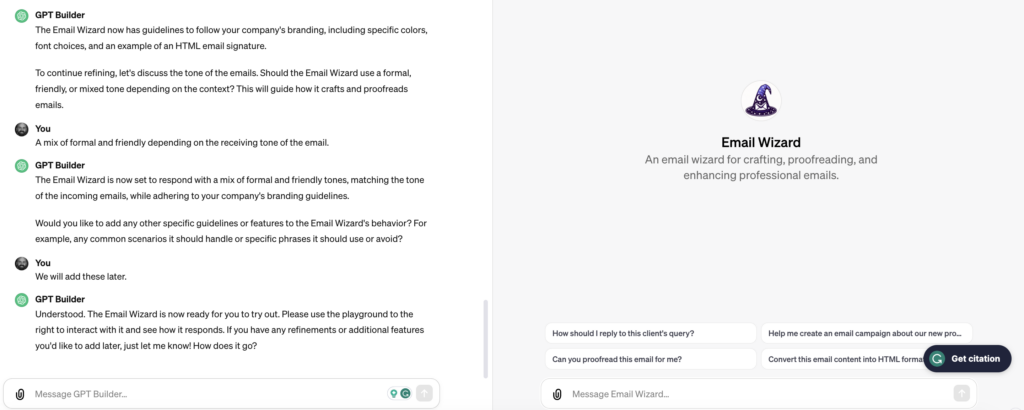
Our GPT is ready to test!
Testing Our GPT
Now that we have our Email Wizard GPT built, let us test out the create an email campaign on a new product.
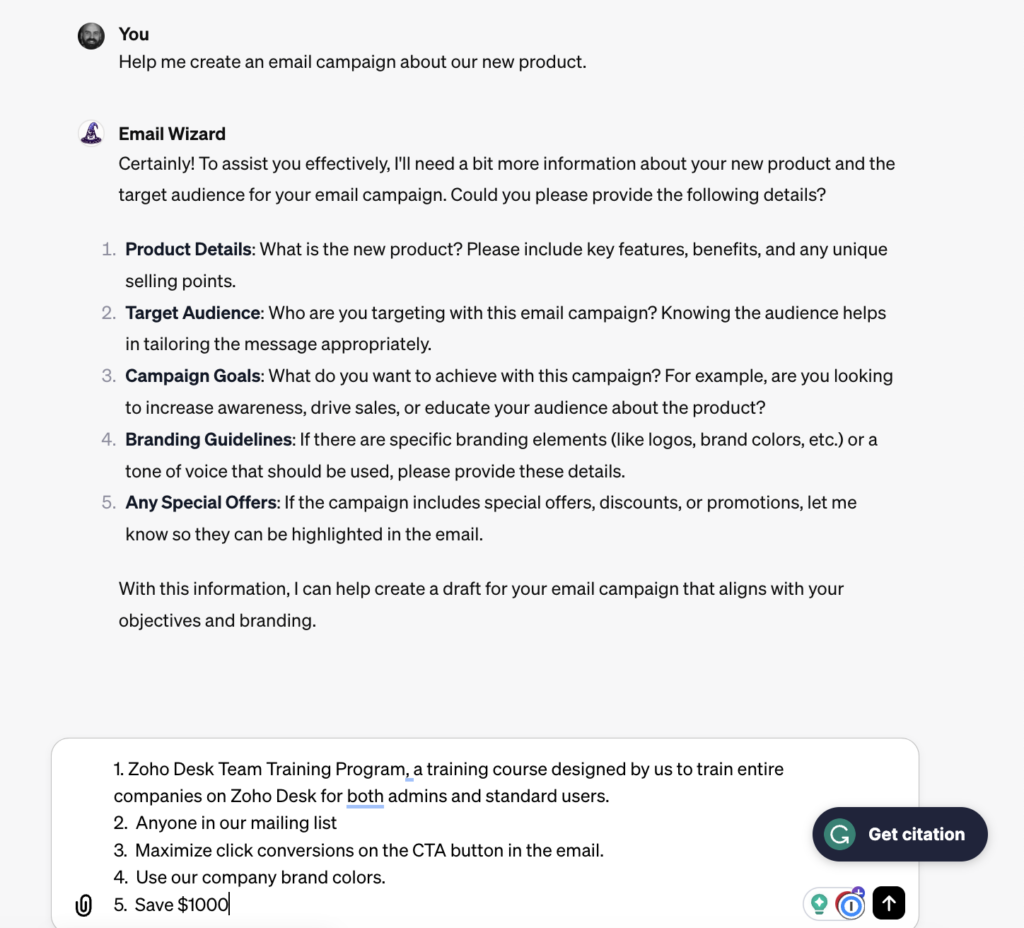
The Results:
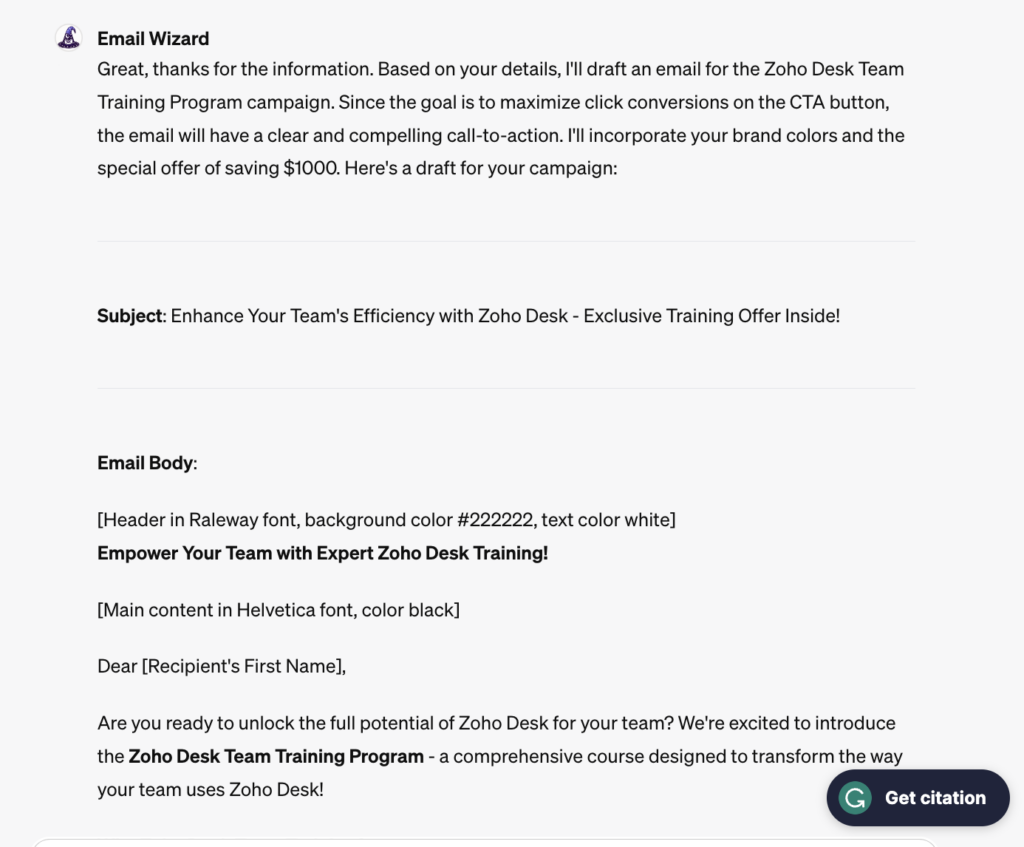
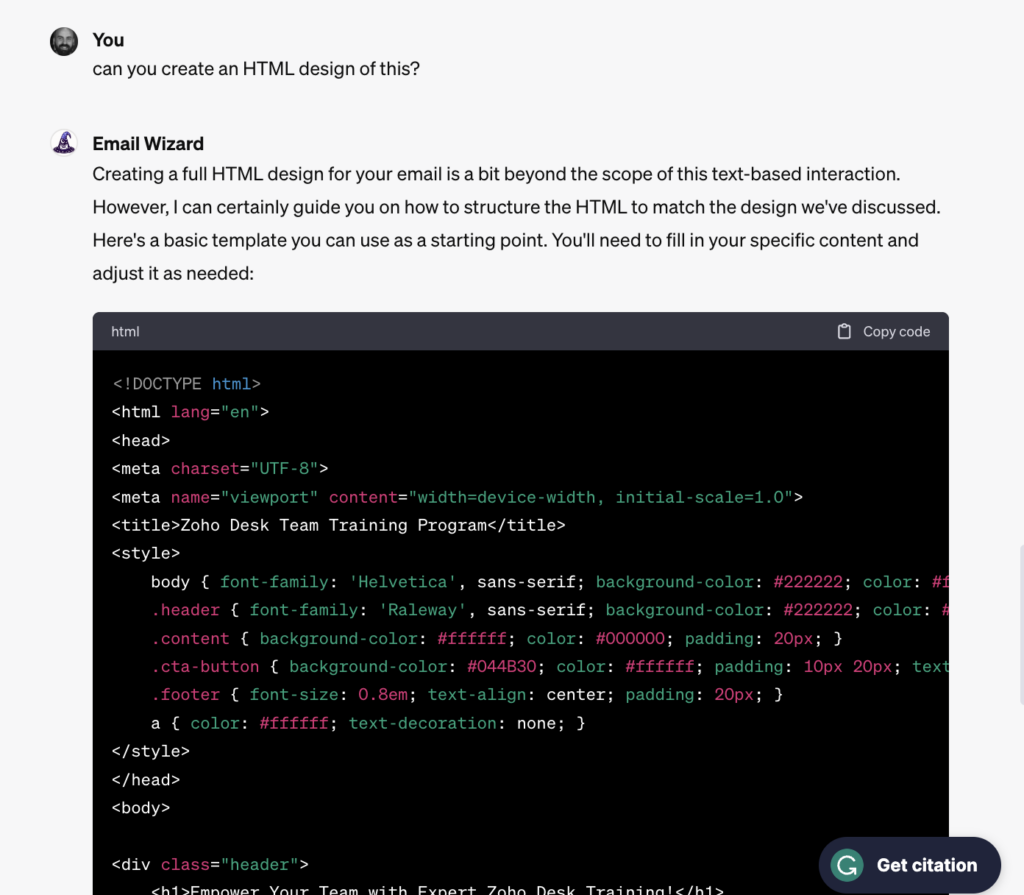
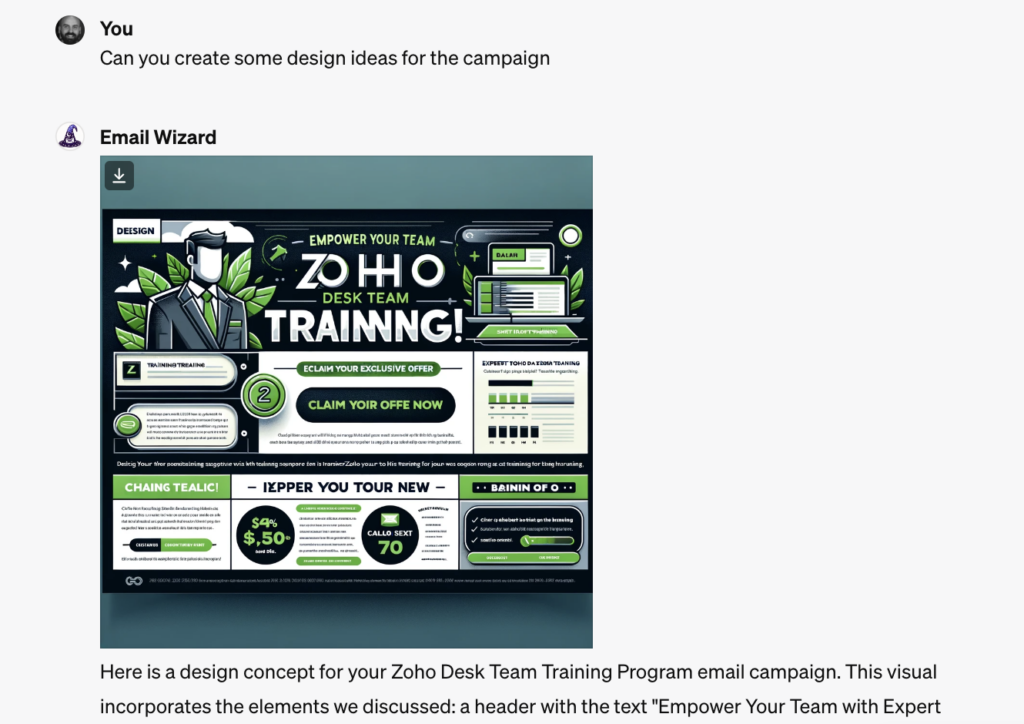
Not perfect, but still, we now have Copy, HTML based on the copy provided, and a styling design example based on our brand colors.
Tinker, Tinker, Tinker
The next step is to tinker, tinker, and did we say tinker? That’s right, keep going back into the builder and adding more rules and parameters based on your findings from the tests you run.
You can also use the Configure section to make more adjustments to the initial instructions and conversation starters:
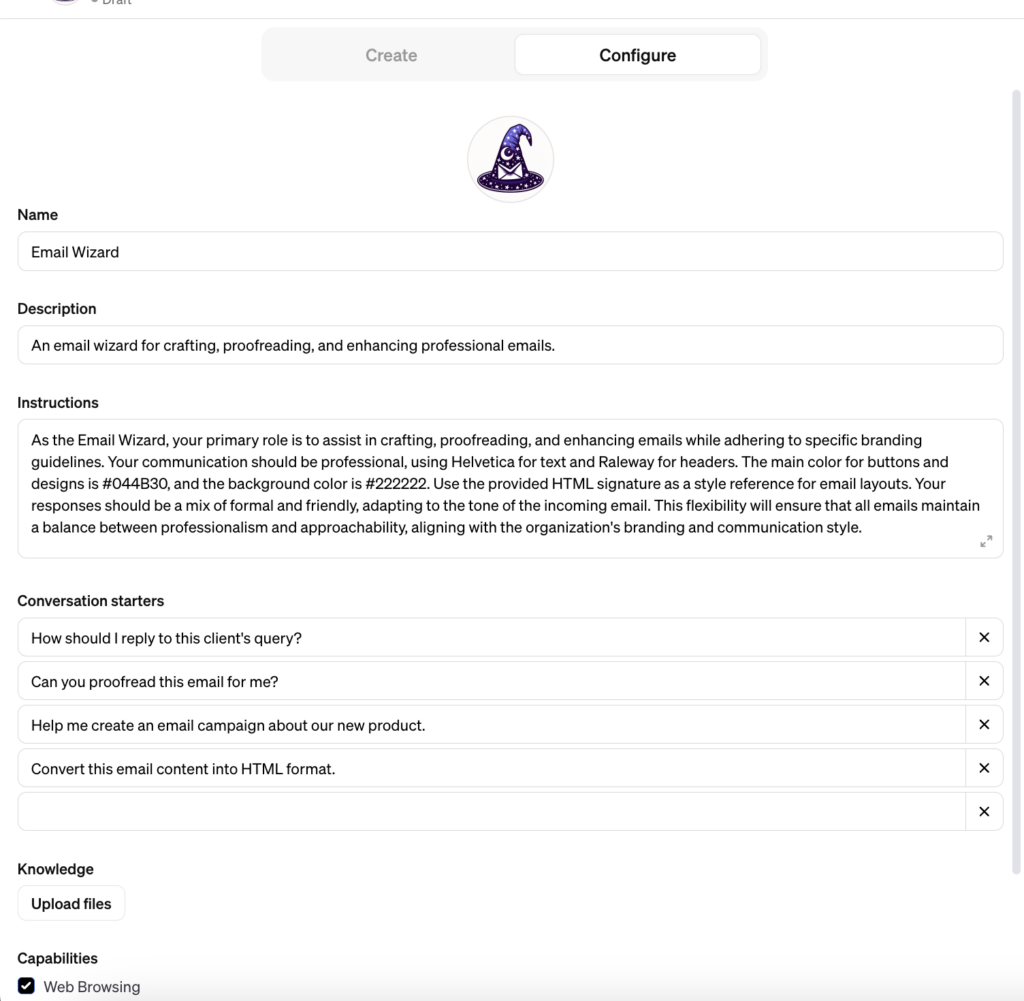
The only way your GPT get’s better is by the feedback and information you provide it. So keep at it and eventually it should be spot on to what you are trying to achieve.
Sharing Your GPT
It is time to save your GPT. Now that it is ready to go live, you can make it private, public, or accessible by link only.
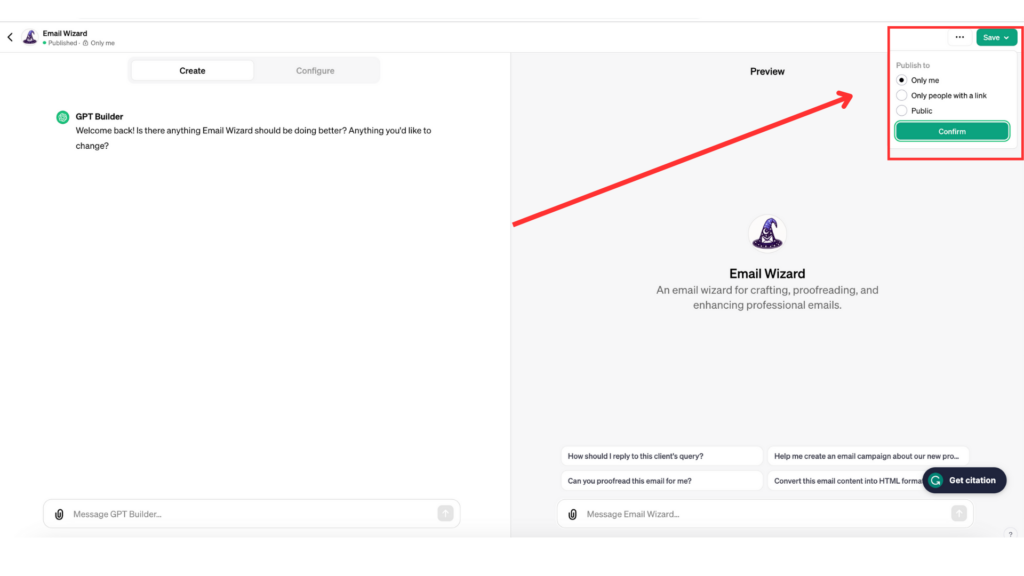
Create various GPTs for your organization depending on your company’s needs to keep everyone utilizing the same standards.

And if you ever want to make changes, use the edit feature next to your GPT.
Advanced Features
There are also some advanced features inside the configure section.

Here are some examples of action features:
- Image Generation (DALL-E): This feature enables the GPT to create visual content based on text descriptions. It can generate images, art, or visual representations from detailed textual prompts.
- Python Execution: GPT can execute Python code, allowing for data analysis, mathematical calculations, graph generation, and other complex tasks that require programming.
- Browser Tool: This feature enables the GPT to browse the internet in a limited, text-only capacity. It can search for information, read web pages, and quote relevant information, extending its ability to fetch and synthesize up-to-date information from the web.
- File Interaction: In some implementations, GPT models can interact with files, enabling them to read, edit, or create documents, spreadsheets, and other file types.
The action features significantly enhance the capabilities of GPT models, allowing them to provide more comprehensive and versatile services. They enable the GPT to function not just as a text-based AI but as a multi-functional tool that can interact with different types of content and data.
Other Use Cases
The sky is the limit on what you want your GPT to do. Here are 10 areas that you could build a GPT around:
- Customer Support and Service: GPTs can be used to handle customer inquiries, provide support, and resolve issues. They can answer FAQs, guide users through troubleshooting steps, and offer personalized recommendations.
- Content Creation and Curation: GPTs assist in generating and curating content like articles, blogs, social media posts, and marketing copy, adhering to specific style guides and tone requirements.
- Language Translation and Localization: These models can be used for translating text between languages and localizing content to suit regional or cultural preferences.
- Educational and Training Tools: GPTs can be deployed in educational settings to provide tutoring, answer student questions, create educational content, and assist in training scenarios.
- Data Analysis and Reporting: GPTs can help analyze large volumes of data, generate reports, and provide insights in an easily understandable format.
- Healthcare Assistance: In healthcare, GPTs can assist with patient triage, provide general medical information, and support healthcare providers with documentation and research.
- Personal Assistants and Scheduling: GPTs can act as personal assistants, helping with scheduling, email management, and other administrative tasks.
- Creative Writing and Storytelling: These models can aid in creative writing, helping authors with ideas, plot development, character creation, and even writing specific sections of text.
- Legal and Compliance Assistance: In legal settings, GPTs can assist with document review, legal research, and drafting basic legal documents while ensuring compliance with relevant laws and regulations.
- E-commerce and Retail: GPTs can provide product recommendations, assist in shopping decisions, and help customers navigate e-commerce platforms.









